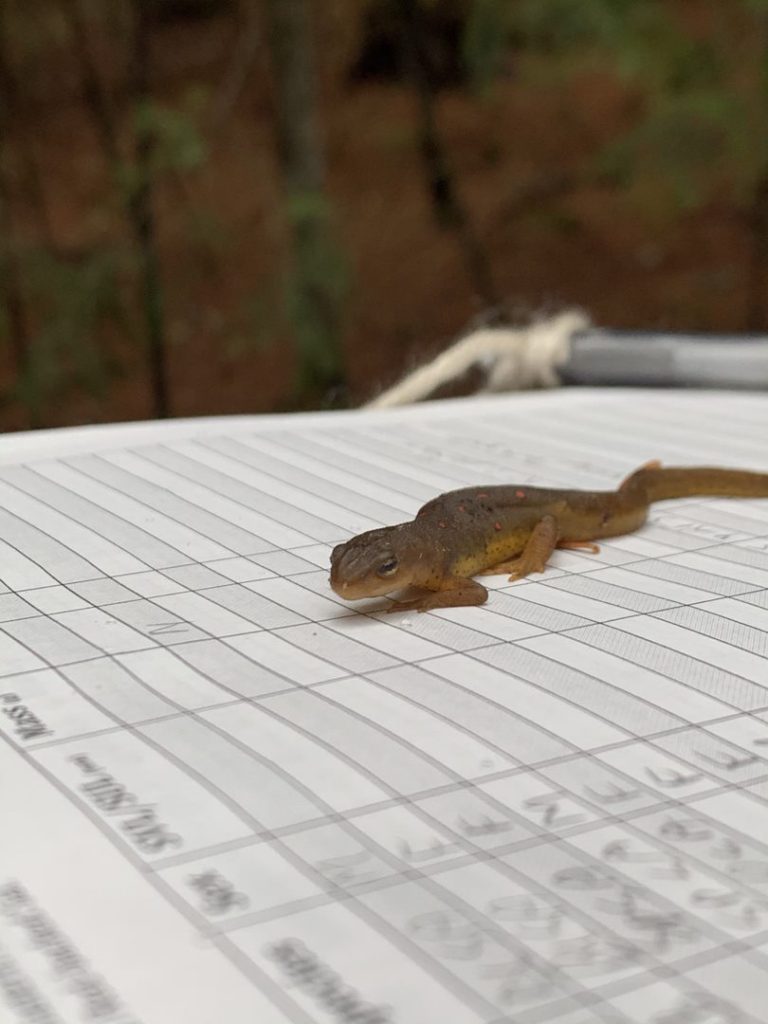
Notophthalmus viridescens viridescens (Red-Spotted Newt) 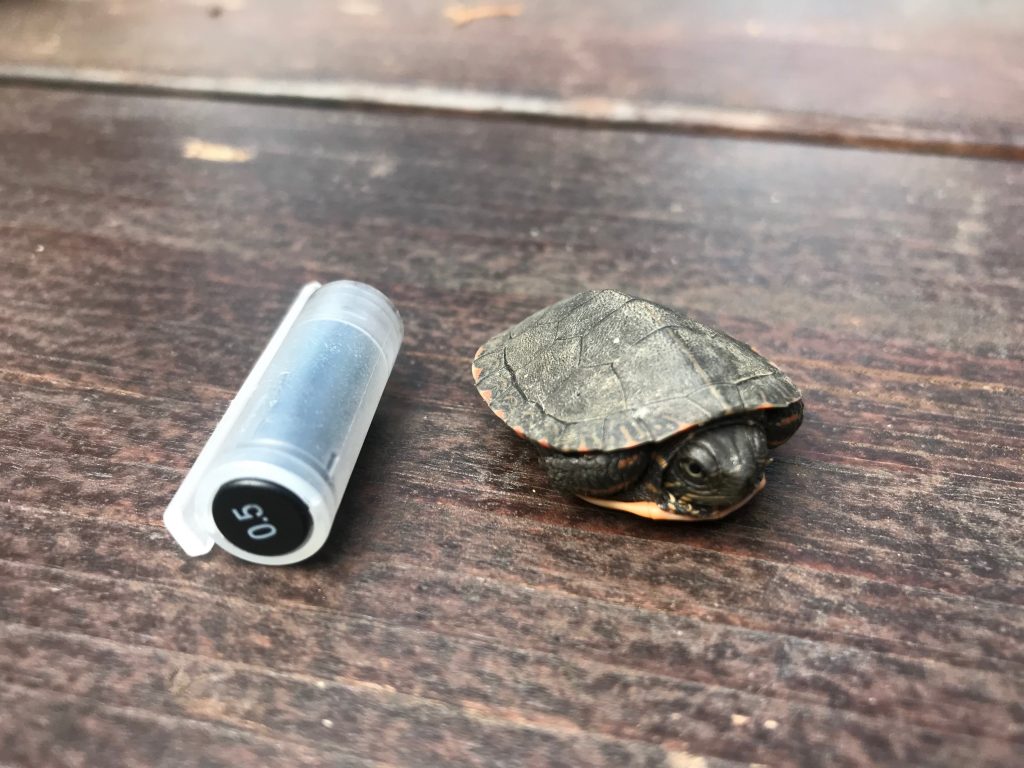
Juvenile Chrysemys picta 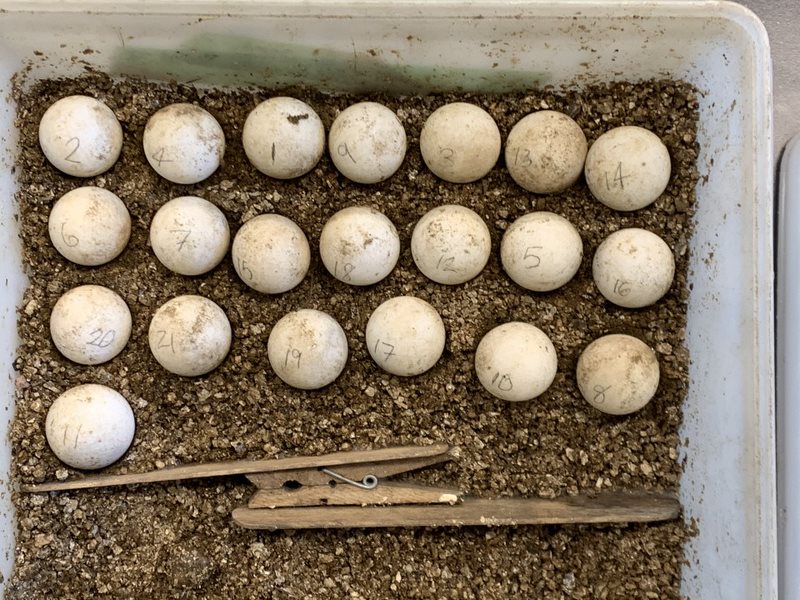
Snapping Turtle Eggs
Temperature, Size, and Fitness
Temperature has pervasive and unexpected effects on ectotherms at all life stages. Many of these effects are conserved across broad lineages of ectotherms, such as smaller body sizes in warm environments, or ecogeographic clines that are conserved within groups but diverge across groups. I’m interested in the adaptive significance of these responses to temperature, and what drives interspecific variation in response. My group integrates principles of life-history theory and physiological ecology to investigate these questions, and answering these questions will help us understand how ecotherms are affected by rapid warming.
Maternal Effects and Early Life Traits
Theory and data suggest that variation in the early life environment, especially offspring provisioning, can affect the entire life-history trajectory of individuals. Clearly, the early life environment matters, but many aspects of provisioning theory remain incomplete. For example, despite the apparent simplicity of the observation, we do not understand why high-condition mothers produce high-condition offspring in broad taxa. And yet, this observation underpins substantial individual differences in reproductive success and life histories. Similarly, some individuals and populations exhibit remarkable variation in investment per offspring over space and time, but the ultimate drivers of this variation remain enigmatic. My group explores the adaptive significance of maternal effects using experiments, and I am interested in collaborating with theoreticians to understand why investment in offspring varies within and across species. We also perform a range of lab and field experiments to better understand the early lives of ectotherms, especially as it relates to understanding basic elements of their natural history. For instance, why do up to 5% of recently metamorphosed salamanders commit suicide by throwing themselves into carnivorous pitcher plants? And why do hatchling turtles communicate via vocalizations in the nest, especially when it puts them at risk of predation ?
Temperature-Dependent Sex Determination
Temperature-dependent sex determination is where our work on thermal traits and the early lives of reptiles converges. In many reptiles, sex is determined by the temperatures experienced during development. The million dollar question is, why, and what are the ecological consequences of TSD under rapid climate change? We probe the evolution and maintenance of TSD using comparative methods and field studies on turtles. We further leverage a 20-yr long study of TSD in snapping turtles in Algonquin Park to explore how climate impacts sex ratios and recruitment for a species with TSD near its northern range limit.
Conservation of Reptiles and Amphibians
How does a species’ traits affect its susceptibility to specific anthropogenic pressure? How can we leverage citizen science data to help conserve long-lived vertebrates in Canada and beyond? How can we tell whether habitat restoration has worked? We tackle these types of question directly with targeted projects.
The Ecology, Evolution, and Conservation of Coldwater Fishes
In the near future, we will have a coldwater aqualab at the University of Toronto; this forthcoming research will focus on the evolutionary ecology and conservation of cold-water fishes.
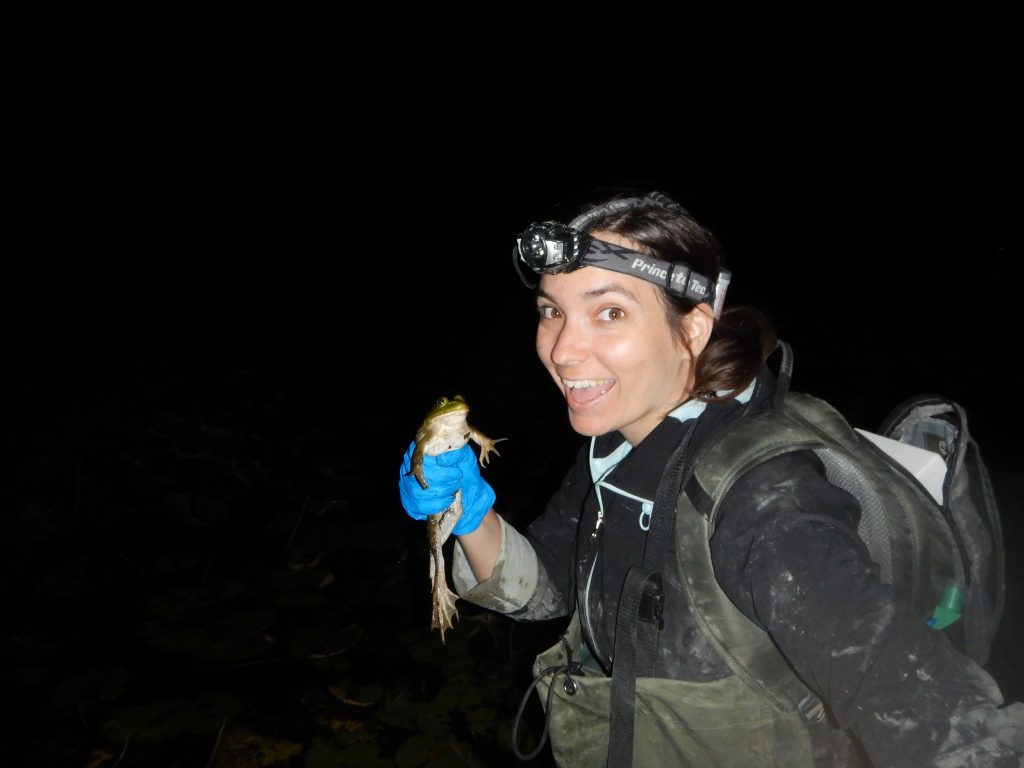
PhD Student holding a Bullfrog 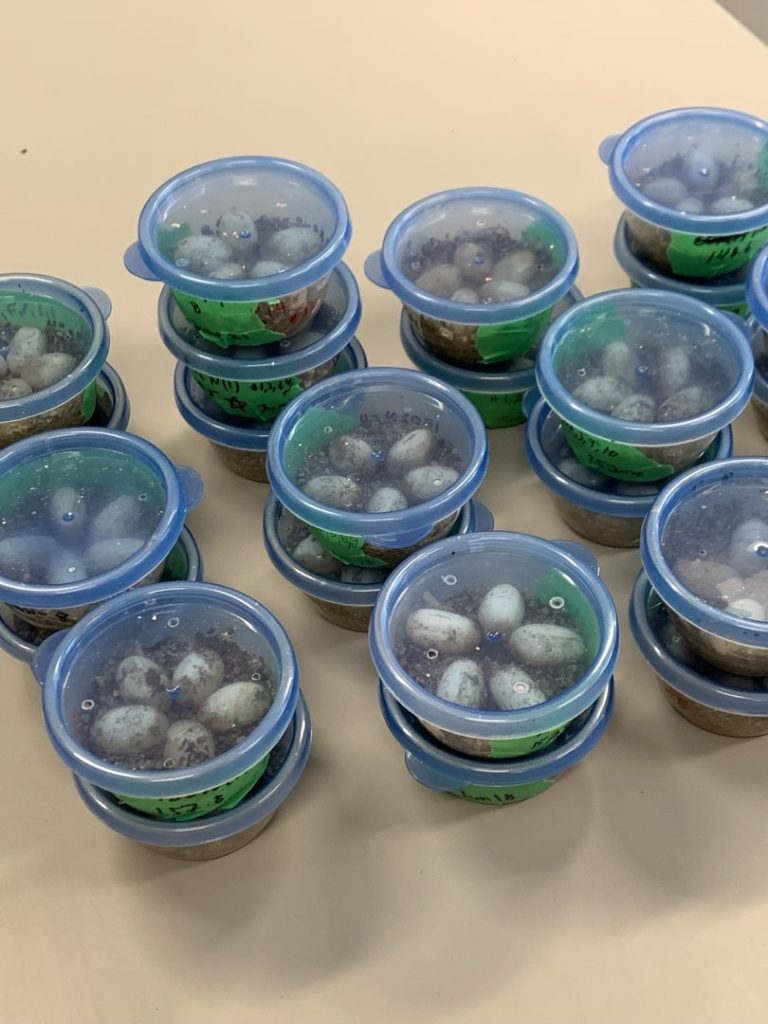
Painted turtle eggs for hatchling vocalization experiment 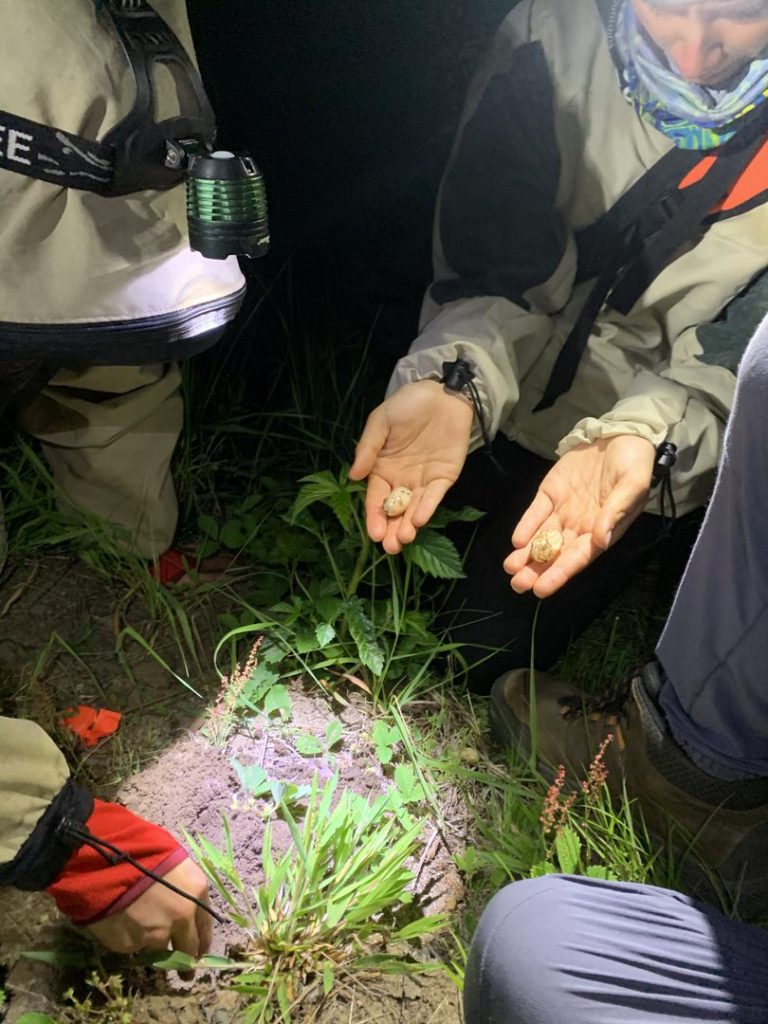
Collecting painted turtle eggs
Recent Comments